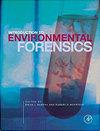作为法庭物证的树木化学法医:树木怎么会说谎?
IF 1.2
4区 环境科学与生态学
Q4 ENVIRONMENTAL SCIENCES
引用次数: 6
摘要
科学工具的法律可采性,如为刑事或民事案件提供法医证据的树木化学,严重依赖于基础和应用科学研究的质量。美国联邦法院用于确定法律可采性的“Daubert”和“Frye”标准要求公布该工具的科学依据,并得到科学界的普遍接受。随着新方法的不断发展,树木法医领域正在迅速发展。在这份手稿中,我们调查了这种树木化学证据是如何在法庭上成功使用的。150多年来,利用物理解剖学和树木年代学方法对树木年轮进行研究已经在法庭上被用作证据。从这些树木生态学的开始,树木化学和生物方法已经足够成熟,可以用于法医调查,作为一种新的独立证据线在世界各地得到应用,支持涉及谋杀、贩运受保护物种和污染犯罪的案件。我们总结了一些关键应用的树木化学在法医案件和说明他们与法庭的例子。所讨论的基本分析方法(如PCR, GC-MS, LIBS, LA/ICP-MS, EDXRF)都是常规的。然而,为了使调查结果与司法案件有关,通常将数据与收集的额外证据线一起应用,例如树木生理学和相关统计数据。这可以让我们获得更强大的数据,以帮助确定特定事件的年龄,或在空间上识别源材料。这篇文章的目的是展示最近的研究如何为在法庭上使用树木化学证据铺平了道路。它展示了树木化学如何在法医调查中发挥作用,包括谋杀案件、受保护物种的贩运和污染犯罪。这些应用是由几个概述的法律案件说明的,但由于其中一些案件的机密性质,并不总是能够提供全部细节或参考资料。图形抽象本文章由计算机程序翻译,如有差异,请以英文原文为准。
Dendrochemical forensics as material evidence in courts: How could trees lie?
Abstract The legal admissibility of scientific tools, such as dendrochemistry providing forensic evidence for criminal or civil cases, critically relies on the quality of fundamental and applied scientific research. The “Daubert” and “Frye” criteria that federal courts in the U.S.A use for determining legal admissibility requires publication of the scientific basis for the tool, and general acceptance by the scientific community. The field of dendroforensics is rapidly evolving, with new methods constantly being developed. In this manuscript we investigate how this dendrochemical evidence has been used successfully in the courtroom. The study of tree rings using physical anatomical and dendrochronological methods has been used as evidence in courts for over 150 years. From these beginnings in dendroecology dendrochemical and biological methods have matured enough to allow it to be used in forensic investigations, finding applications as a new independent line of evidence around the world, supporting cases involving murder, trafficking of protected species, and pollution crimes. We summarize some of the key applications of dendrochemistry in forensic cases and illustrate them with courtroom examples. The basic analytical methods discussed (e.g., PCR, GC-MS, LIBS, LA/ICP-MS, EDXRF) are all conventional. However, for findings to be relevant to judicial cases, the data is normally applied with additional lines of evidence gathered such as tree physiology and relevant statistics. This can allow us to gain more powerful data to help age date a specific event or to spatially identify a source material. The purpose of this article is to show how recent research has paved the way for the use of dendrochemical evidence in courts. It shows how dendrochemistry can be useful for forensic investigations including: murder cases, trafficking of protected species, and pollution crimes. The applications are illustrated by several summarized legal cases, but due to the confidential nature of some of these cases it was not always possible to provide full details or references. Graphical Abstract
求助全文
通过发布文献求助,成功后即可免费获取论文全文。
去求助
来源期刊

Environmental Forensics
环境科学-环境科学
CiteScore
4.90
自引率
5.60%
发文量
23
审稿时长
3 months
期刊介绍:
Environmental Forensics provides a forum for scientific investigations that address environment contamination, its sources, and the historical reconstruction of its release into the environment. The context for investigations that form the published papers in the journal are often subjects to regulatory or legal proceedings, public scrutiny, and debate. In all contexts, rigorous scientific underpinnings guide the subject investigations.
Specifically, the journal is an international, quarterly, peer-reviewed publication offering scientific studies that explore or are relevant to the source, age, fate, transport, as well as human health and ecological effects of environmental contamination. Journal subject matter encompasses all aspects of contamination mentioned above within the environmental media of air, water, soil, sediments and biota. Data evaluation and analysis approaches are highlighted as well including multivariate statistical methods. Journal focus is on scientific and technical information, data, and critical analysis in the following areas:
-Contaminant Fingerprinting for source identification and/or age-dating, including (but not limited to) chemical, isotopic, chiral, mineralogical/microscopy techniques, DNA and tree-ring fingerprinting
-Specific Evaluative Techniques for source identification and/or age-dating including (but not limited to) historical document and aerial photography review, signature chemicals, atmospheric tracers and markets forensics, background concentration evaluations.
-Statistical Evaluation, Contaminant Modeling and Data Visualization
-Vapor Intrusion including delineating the source and background values of indoor air contamination
-Integrated Case Studies, employing environmental fate techniques
-Legal Considerations, including strategic considerations for environmental fate in litigation and arbitration, and regulatory statutes and actions
 求助内容:
求助内容: 应助结果提醒方式:
应助结果提醒方式:


